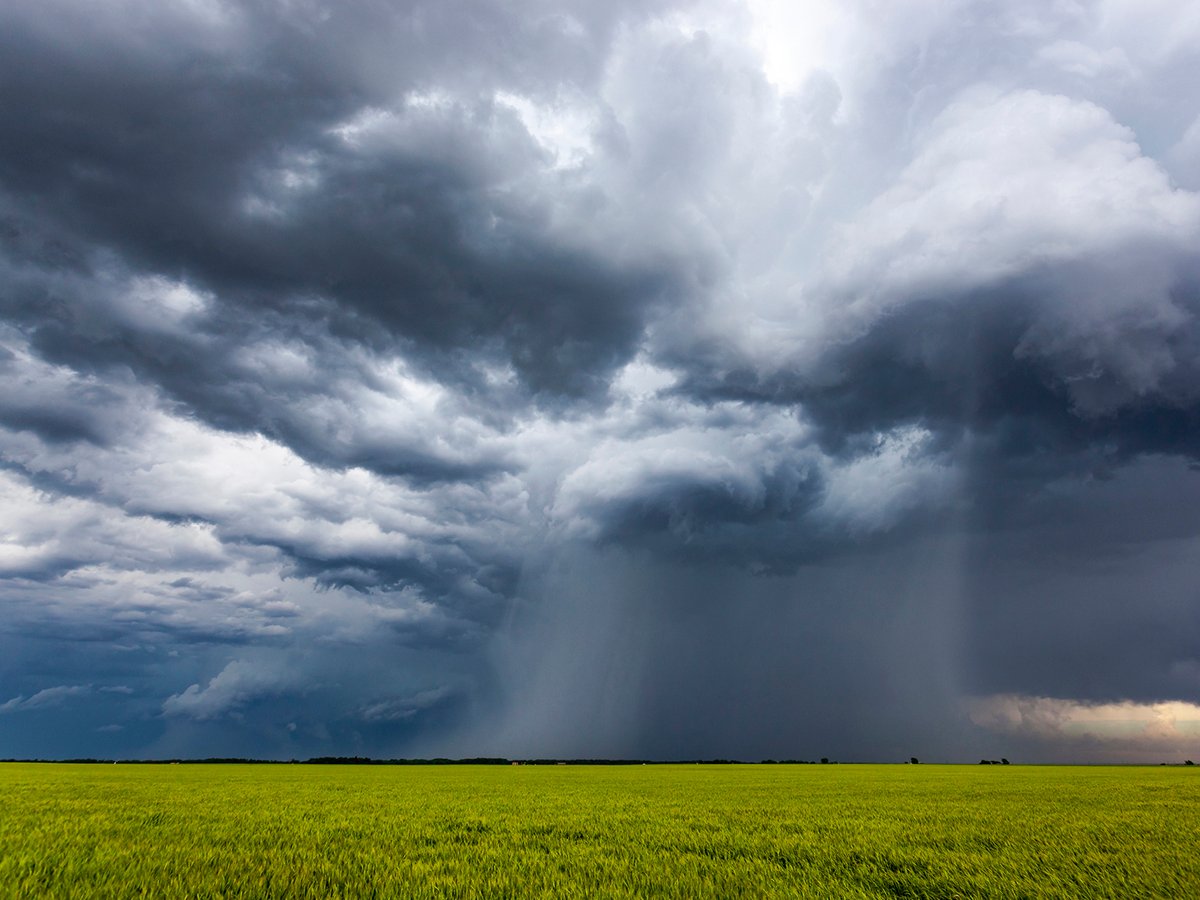On-farm audits to examine animal welfare are coming to hog producers as a response to consumer demands, says Catherine Scovil of the Canadian Pork Council.
Producers on the Prairies already have a voluntary code of practice created by the pork council, Agriculture Canada, the Canadian Agri-Food Research Council, academics, producer groups and humane societies.
It details standards for the care and handling of pigs for growers and processors alike in areas of housing, nutrition, stockmanship and slaughter.
Scovil said the current code of practice is a solid foundation but there is pressure on producers to demonstrate what they are doing on the farm.
Read Also

Extreme rain increases as planet warms
In this issue, we are going to wrap up our look at extreme rainfall by examining the different weather patterns that tend to be associated with these rainfall events.
The council has made animal welfare a high priority and created a committee to study measurable and auditable ways to measure it. She said it would work best if incorporated into the current Quality Assurance program, which is an on-farm food safety program.
Under it, producers are required to obtain and read the national code of practice.
“In essence, the code is part of the program,” Scovil said.
Sask Pork supports the move to enhanced animal welfare standards, based on the latest scientific research and management practices. Currently the industry averages for pig deaths in barns is around five percent, she said.
Added Catriona Shinkewski, national services co-ordinator with Sask Pork: “It’ll be a good thing, producers will take note of small things they’ve missed.”
Paul Hodgman, assistant general manager of Alberta Pork, said the industry is pleased with what is in place now, but producers realize more has to be done.
He cited Alberta Pork’s recent development of a booklet called The Humane Handling of Swine, Standards for the Care of Unfit Animals. It also holds classes for truckers in proper handling and loading of animals.
Although voluntary, the guidelines are becoming the standard in Alberta with strong support among producers and industry, he said.
The Canadian Pork Council wants to identify what retailers and packers want as a standard, and then seek clear ways to test for animal welfare standards.
“Our industry knows it has to be measurable and auditable or the (quality assurance) program will lose its integrity entirely,” Hodgman said.
He said any changes will be better accepted if they come from producer and consumer groups than from government.
“If these things become motivated by the marketplace, then there’s some rationale for it. If motivated by government, we will have some problem.”
Hodgman said there is much pressure from fast food chains, retailers and animals rights activists for further assurances that live animals are handled humanely.
“Most people don’t know what we do or about agriculture generally but they want assurances the food is safe, we’re not abusing the environment and they’re looking after their animals.”
Use of gestation crates is one practice coming under scrutiny, he said.
At the annual Banff Pork Seminar in January, delegates were told systems are being developed to find reliable, specific indicators such as the number of times electric prods are used, or how often animals squeal in certain situations.
For sows, lameness, body condition, air quality and other factors could be measured.
“There’s not a lack of bodies out there enforcing it,” said Hodgman.
Herd health is monitored at large pig barns by veterinarians hired by companies.
Federal agencies like the CFIA and provincial agriculture departments also employ vets and inspectors to oversee animal welfare. They have the authority to enter barns, even biosecure ones, when they believe it is warranted. Requests for inspections often come from the vet working in the barns.
Humane societies are also in place across the Prairies to enforce animal protection legislation.
They are free to do impromptu inspections without warrants, if they feel evidence may be tampered with or removed, or if animals’ lives are in imminent danger, said Frances Wach, executive director of Saskatchewan’s SPCA.
Manitoba has taken animal welfare a step further by making the code of practice for farm animals mandatory, said Gus Wruck, a vet with Manitoba Agriculture.
“These are not recommended codes of practice,” said Wruck. “They are required in Manitoba.”
“Basically we can go anywhere we like where we believe there is an infraction of the act.”














